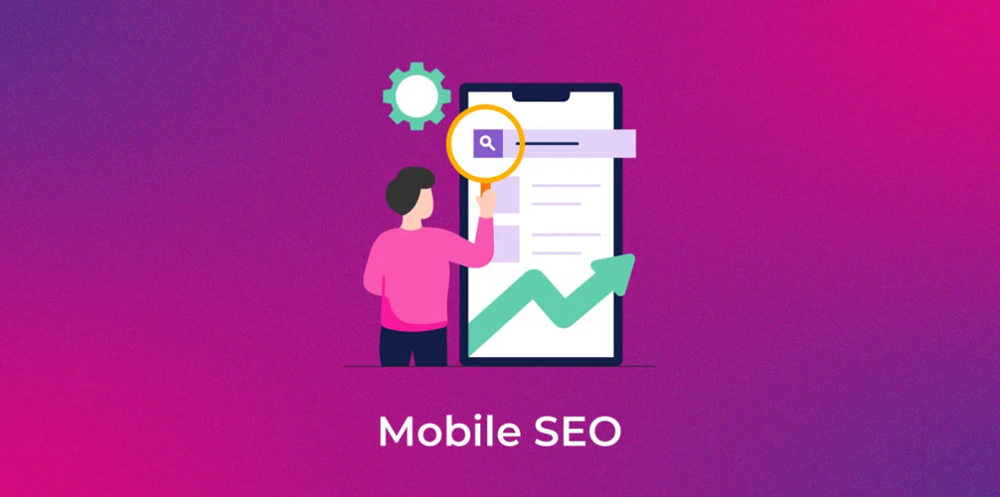Mobile SEO Optimization: The Hidden Factor Driving Sales
Why mobile performance matters for rankings, conversions, and revenue

Mobile commerce (m-commerce) is no longer the future—it’s the present. More than 60% of online sales now happen on smartphones, and search engines like Google prioritize mobile experiences in their rankings. If your e-commerce store isn’t fully optimized for mobile users, you’re losing both visibility and revenue. In this article, we’ll explore why mobile SEO matters, how Core Web Vitals directly impact rankings and conversions on smartphones, and what you can do to create a frictionless mobile shopping experience.
Google officially switched to mobile-first indexing—meaning it evaluates and ranks websites based on their mobile versions, not desktop. If your mobile site loads slowly, has poor usability, or hides essential content, your rankings will suffer—even if the desktop version is flawless.
Key impacts of mobile optimization on SEO:
- Search Visibility: Fast, responsive mobile pages rank higher.
- Bounce Rate: Mobile users abandon slow or confusing sites within seconds.
- Competitive Advantage: Many businesses still underinvest in mobile UX, creating opportunities for optimized sites.
A poor mobile experience directly reduces conversions. Small buttons, clunky navigation, or slow load times frustrate shoppers and drive them to competitors. On the other hand, a seamless mobile journey increases trust and encourages impulse buying.
Example: A fashion retailer reduced checkout steps and introduced Apple Pay/Google Pay for mobile users. Result? Conversions increased by 25% within one month.
Core Web Vitals measure user experience and are crucial for both SEO and conversions. On mobile, they are even more critical due to slower connections and smaller screens.
- Largest Contentful Paint (LCP): Should load within 2.5s for mobile users. Optimize images and use lazy loading.
- Interaction to Next Paint (INP): Mobile shoppers expect instant feedback. Compress scripts and minimize third-party code.
- Cumulative Layout Shift (CLS): Avoid unexpected shifts that make users mis-tap buttons or lose their place.
- Time to First Byte (TTFB): A fast server response ensures smooth performance even on 4G connections.
Case Study: An electronics store improved its mobile LCP from 3.8s to 2.1s by compressing product images. This not only boosted rankings but reduced cart abandonment by 18%.
- Responsive Design: Ensure content adapts seamlessly to all screen sizes.
- Thumb-Friendly CTAs: Place buttons within easy reach and make them large enough for tapping.
- Minimalist Navigation: Use hamburger menus, sticky headers, and collapsible filters.
- One-Page Checkout: Reduce friction by consolidating steps and offering guest checkout.
- Fast Payment Options: Integrate Apple Pay, Google Pay, and PayPal for quick transactions.
- Visible Trust Signals: Display reviews, ratings, and security badges prominently on mobile screens.
- Case A: A beauty brand reduced mobile bounce rates by 30% after optimizing Core Web Vitals and simplifying product pages.
- Case B: An online grocery store introduced voice search for mobile users, increasing mobile order frequency by 20%.
- Case C: A subscription box business added a progress indicator in its mobile checkout, reducing abandonment by 15%.
Mobile SEO and UI aren’t separate strategies—they reinforce each other. A site that loads fast but has tiny, unreadable text will still lose customers. Likewise, a beautifully designed mobile UI won’t rank if it fails Core Web Vitals. The winning formula is combining technical SEO with human-centered design.
Example: A shoe retailer optimized both mobile site speed (SEO) and thumb-friendly navigation (UI). Together, these changes led to a 40% increase in sales from mobile users.
- ✅ Audit Core Web Vitals on mobile devices regularly.
- ✅ Compress images and implement responsive formats (WebP, AVIF).
- ✅ Use lazy loading for product galleries.
- ✅ Test CTAs for thumb reach and tap accuracy.
- ✅ Simplify navigation and reduce unnecessary pop-ups.
- ✅ Enable one-click payments and autofill in checkout forms.
Mobile optimization is more than a technical requirement—it’s a growth lever. By improving Core Web Vitals, simplifying UI, and tailoring UX for mobile shoppers, you can boost both rankings and sales. As more consumers shift to mobile-first shopping, businesses that prioritize mobile SEO and design will gain a clear competitive advantage.
Manual audits can be time-consuming. SalesPilot is an advanced seo extension that analyzes Core Web Vitals, UI/UX, and mobile performance in real time. Identify bottlenecks, fix issues, and increase conversions with one click.
Free Chrome extension • Mobile SEO analysis • Optimize rankings & conversions